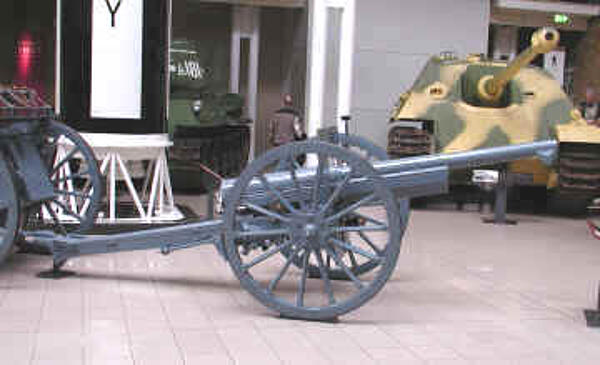French 75 mm field gun
The French 75mm quick-firing field gun and was one of the most important parts of the French artillery during World War One, featuring a revolutionary design that made a popular choice during battle.
It was first made in 1897 and was commonly referred to as a French 75. The gun was designed as an anti-personnel weapon system that was designed for delivering shrapnel on a timer that was aimed towards enemy troops. By 1914, there were 4,000 in the French army but many preferred to use impact-detonated high-explosive shells that were considered more effective in trench warfare. However, the numbers continued to grow as they were very effective at delivering toxic gas shells. The 75 was also used very widely as a means of attacking military aircraft from the ground.

The French 75 is thought to be the first modern artillery gun, featuring a first-of-a-kind hydro-pneumatic recoil mechanism that ensured the gun remained still during firing. This made reloading very rapid and made it possible to deliver 15 rounds per minute.
Facts:
- The gun had a 3 inches calibre
- Each gun weighed 1,143kg
- It had a range of 9,000 metres
- It fired a 5.2kg high explosive shell and had a 7.2kg shrapnel shell
- The French had 12,000 by the end of the war
- The firing rate was 20 rounds a minute
MLA Citation/Reference
"French 75 mm field gun". HistoryLearning.com. 2026. Web.
